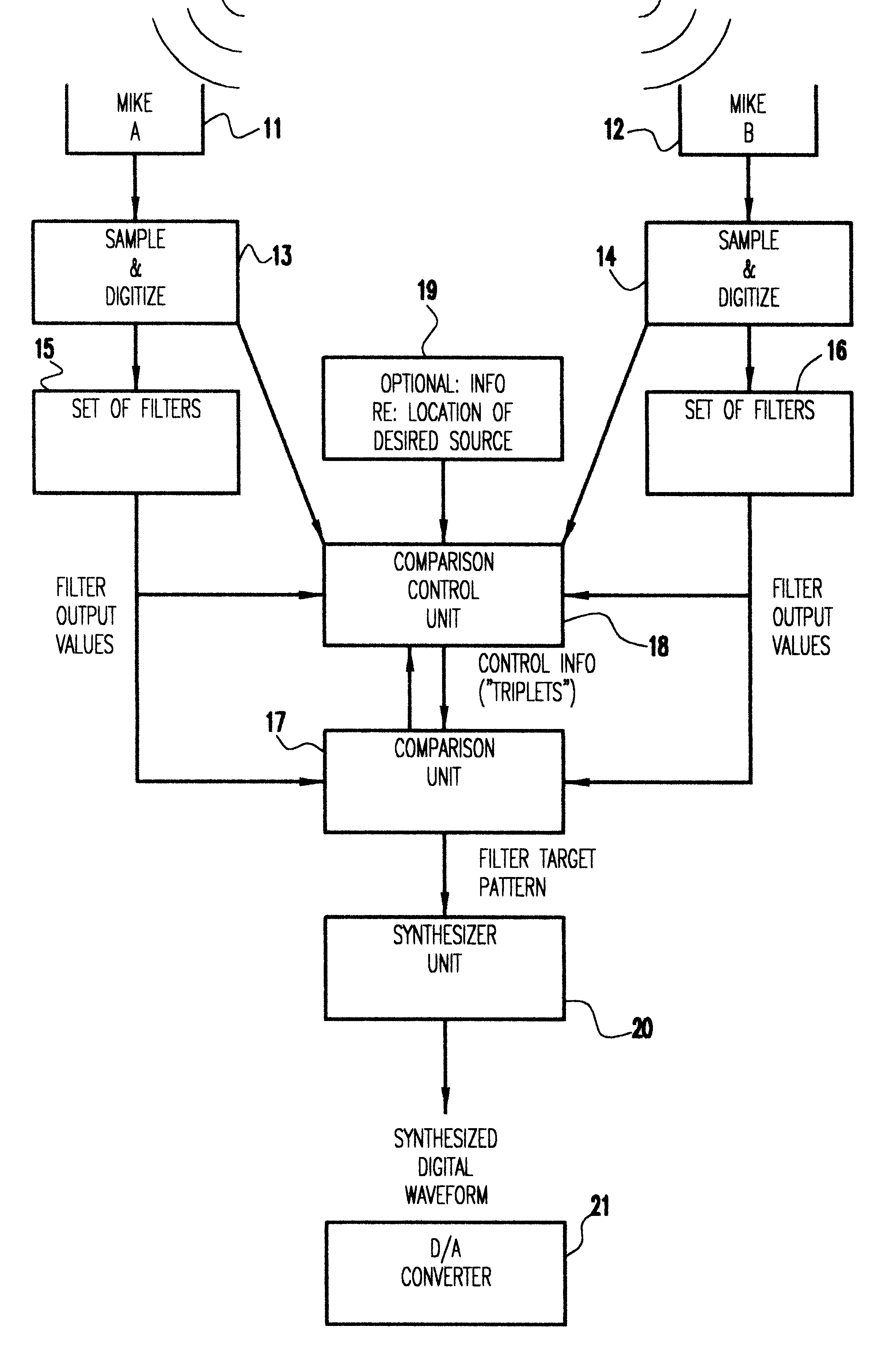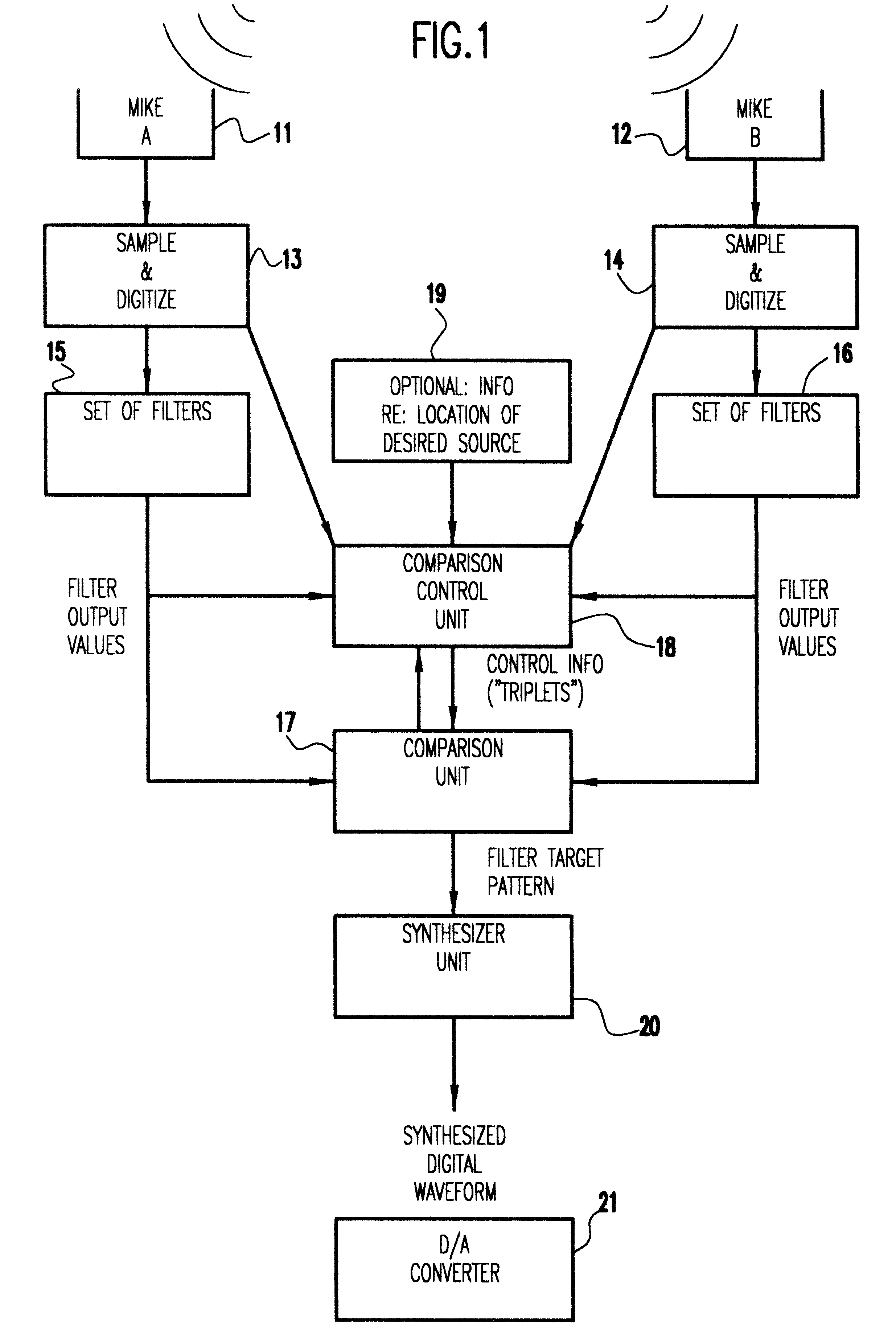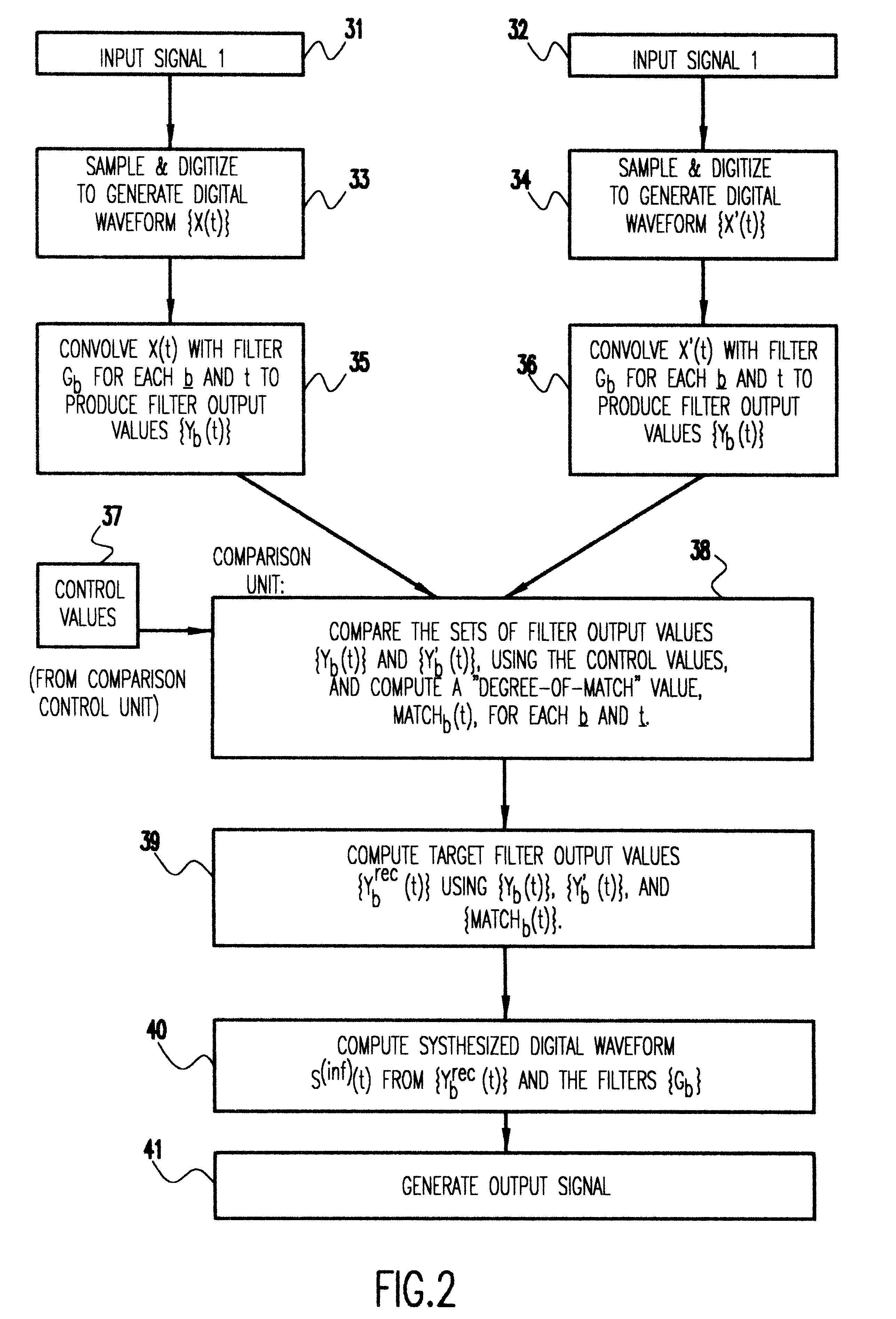Separation of a mixture of acoustic sources into its components
- Summary
- Abstract
- Description
- Claims
- Application Information
AI Technical Summary
Problems solved by technology
Method used
Image
Examples
example problem
and Results
There are M>2 acoustic sources S.sub.1, S.sub.2, . . . , S.sub.M. We are given two linear combinations of them:
X(t)=.SIGMA.S.sub.m (t);X(t)=.SIGMA.A.sub.m S.sub.m (t-.tau..sub.m);
where the (A.sub.m,.tau..sub.m) pair is different for each m. We do not assume that the sources must be statistically independent (for example, one "source" may be a time-delayed echo of another). The problem is to reconstruct (approximately) S.sub.l, . . . , S.sub.M.
The example described here is for the case in which the sources are different samples of speech, M=3, A.sub.m =1, and the .tau..sub.m are known.
The three source waveforms are shown in FIGS. 6A, 6B and 6C, and time expanded portions of the three source waveforms are shown in FIGS. 7A, 7B and 7C, respectively. Digitized samples are 16-bit, 22,000 sample points / sec.
Mixing parameters used are: A.sub.1 =A.sub.2 =A.sub.3 =1; .tau..sub.1 =0; .tau..sub.2 =5 sample points=0.227 ms; .tau..sub.3 =11 sample points=0.5 ms.
The composite signals X ...
PUM
 Login to View More
Login to View More Abstract
Description
Claims
Application Information
 Login to View More
Login to View More - R&D
- Intellectual Property
- Life Sciences
- Materials
- Tech Scout
- Unparalleled Data Quality
- Higher Quality Content
- 60% Fewer Hallucinations
Browse by: Latest US Patents, China's latest patents, Technical Efficacy Thesaurus, Application Domain, Technology Topic, Popular Technical Reports.
© 2025 PatSnap. All rights reserved.Legal|Privacy policy|Modern Slavery Act Transparency Statement|Sitemap|About US| Contact US: help@patsnap.com



